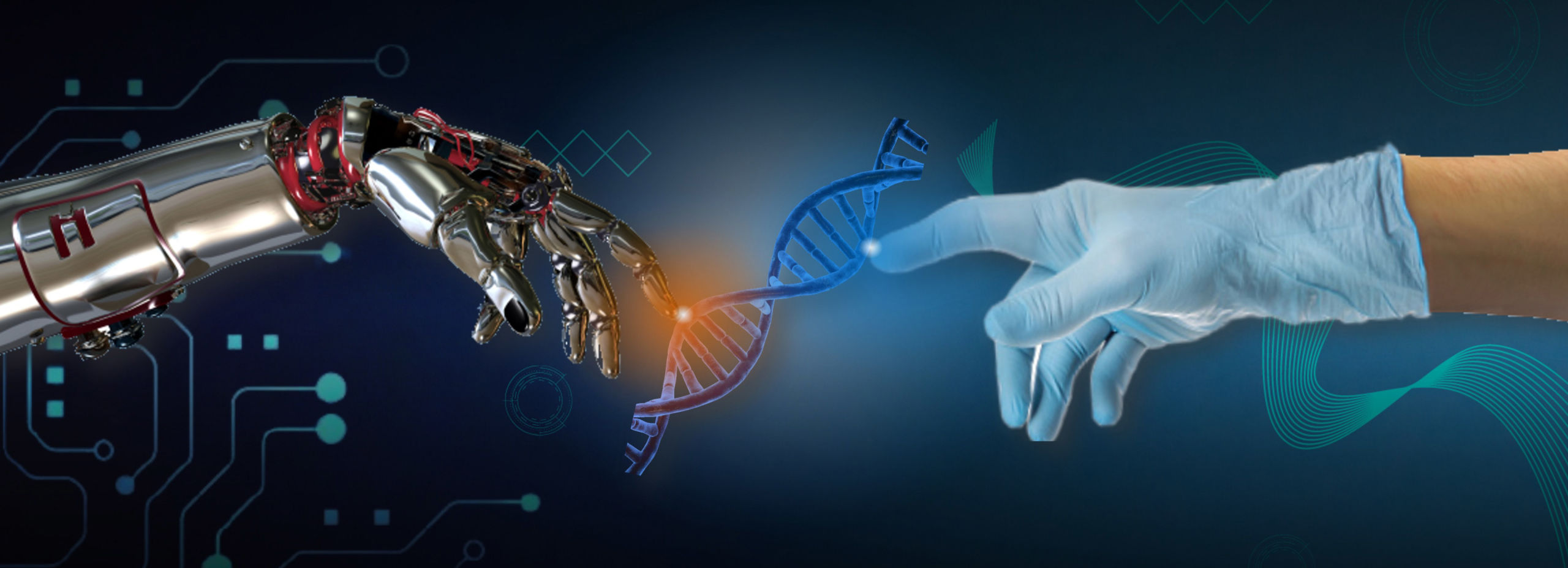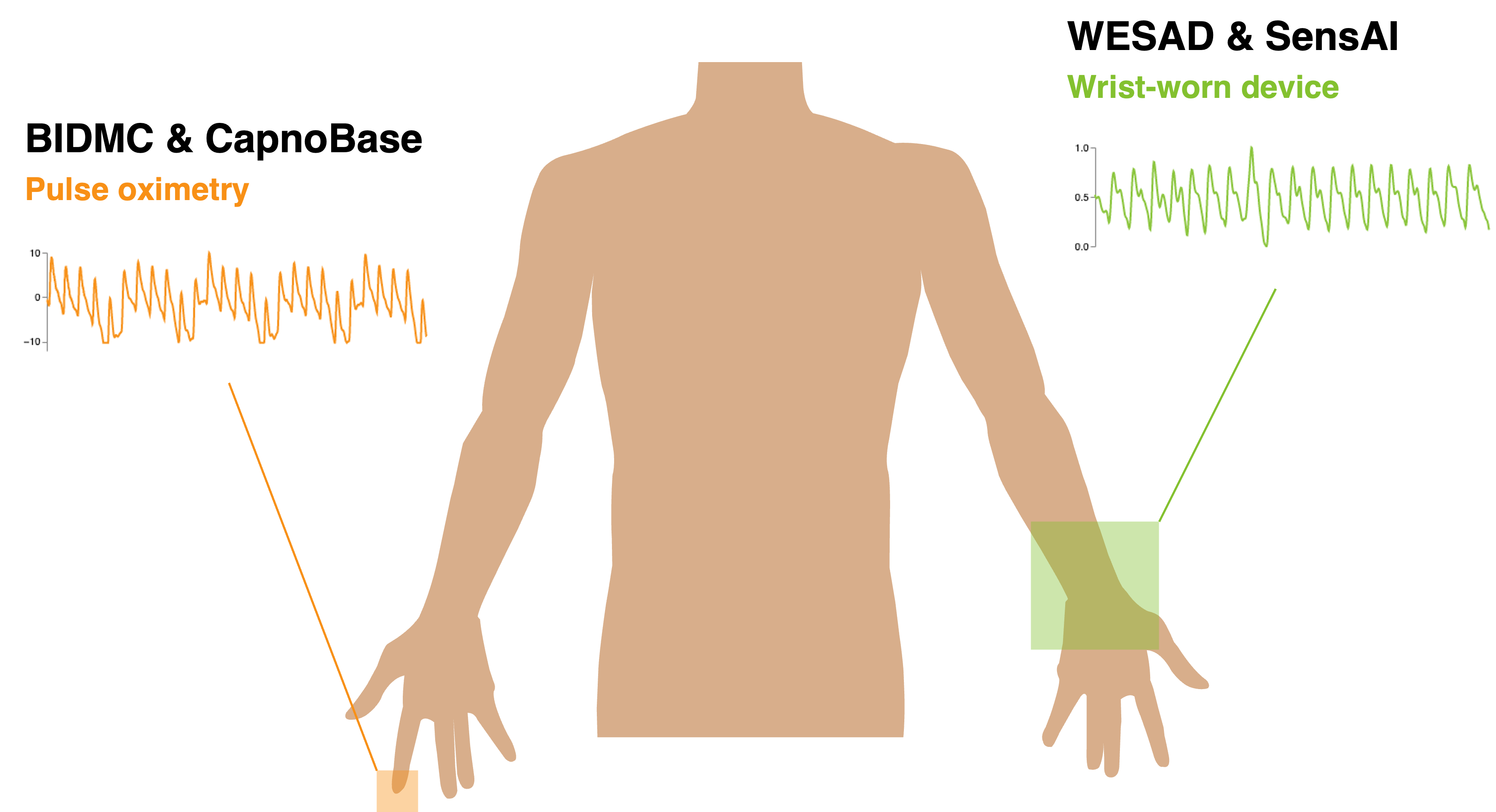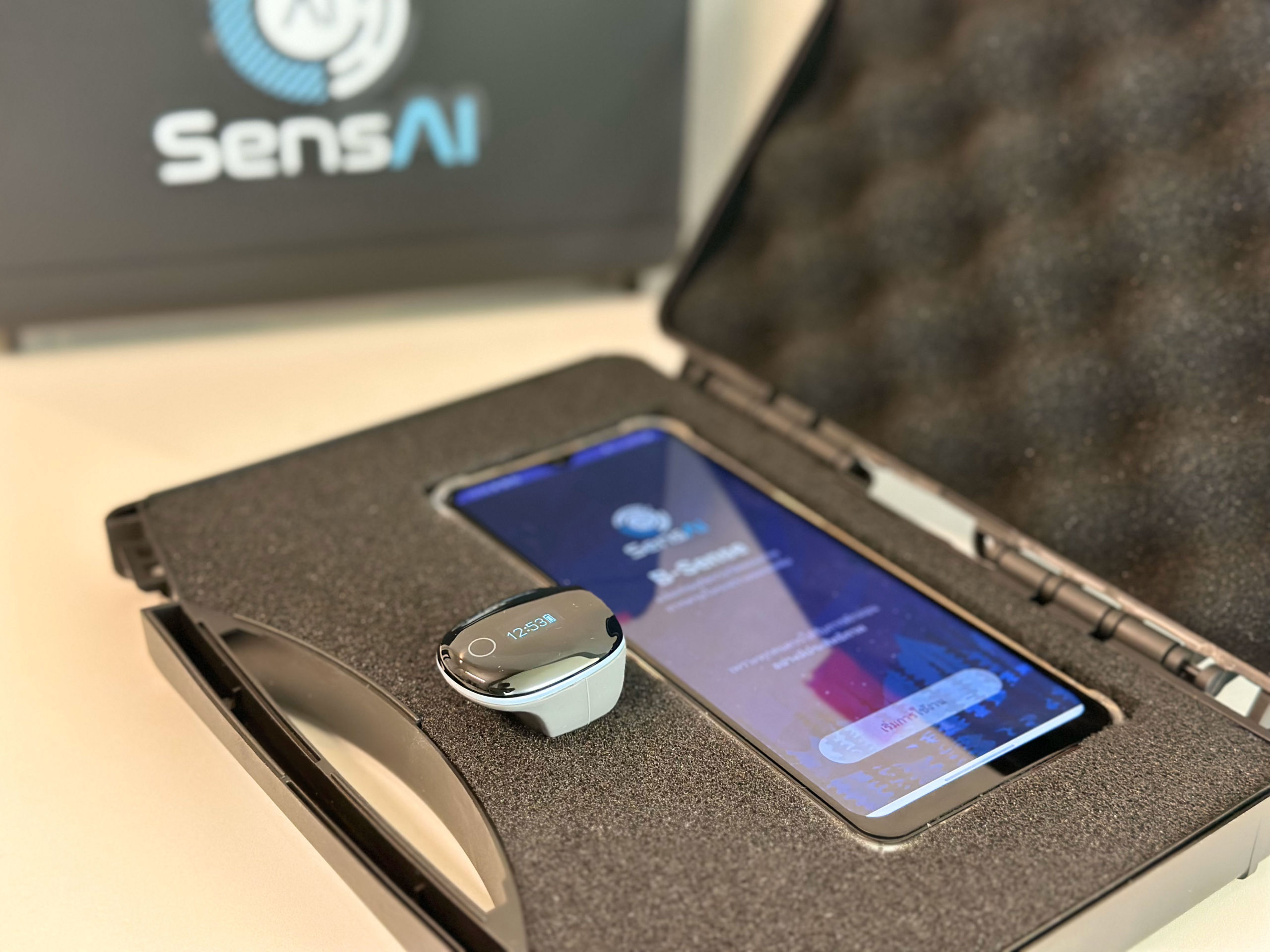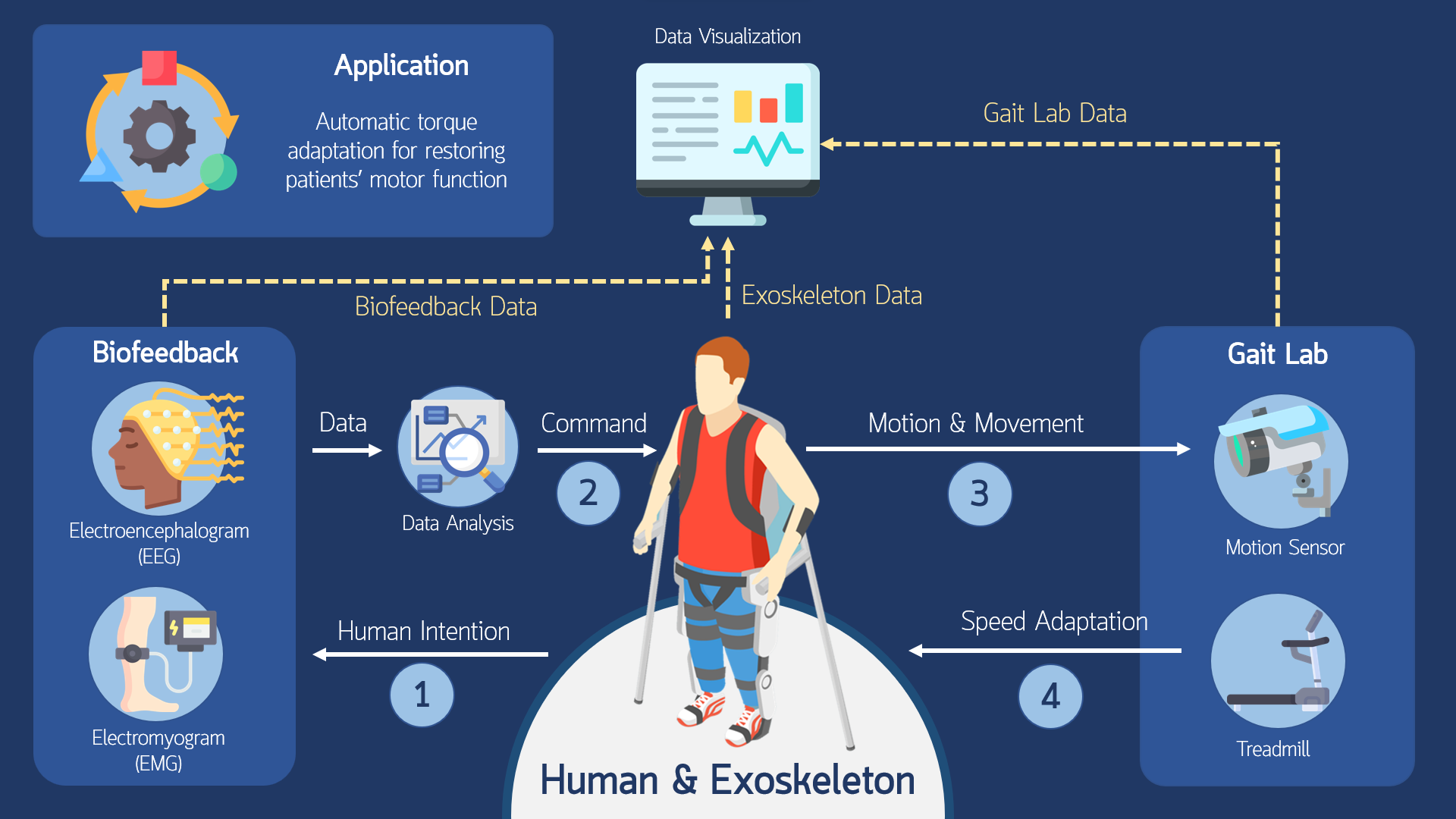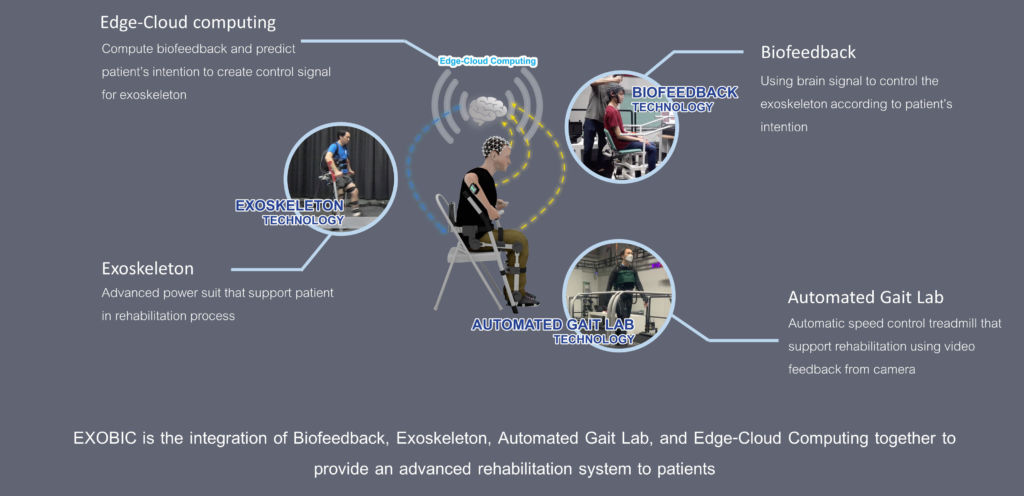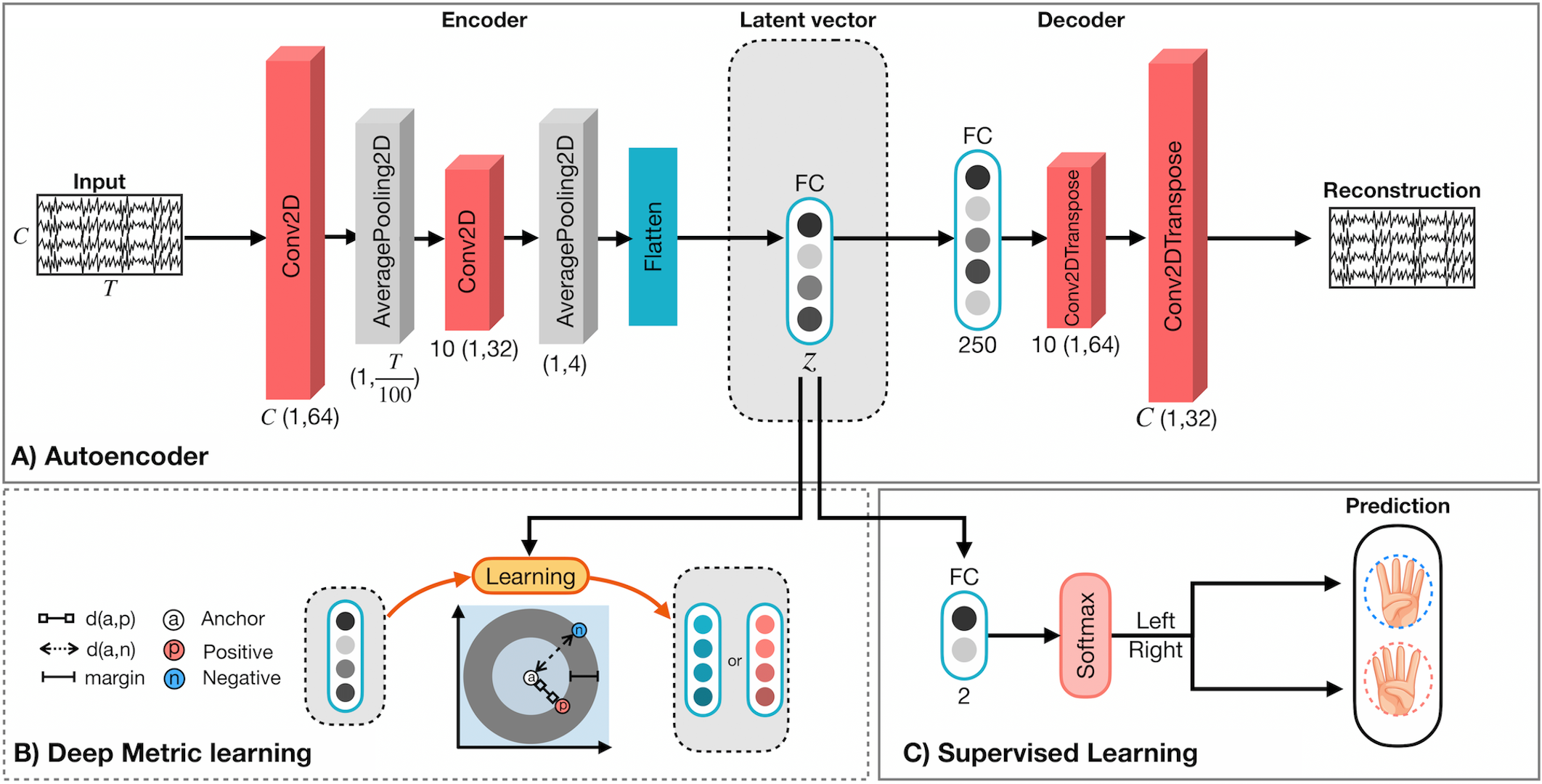Overview
The Interfaces Research Team has conducted research and development in bridging the gap between man and machine. Currently, we mainly focus on advancing the future of health technology. AI in health and mobile sensing technologies play essential roles in assisting humans to improve health care services and well-being.
Subprogram I: Advanced Remote Health Monitoring and Sensing
The world is moving toward a data-driven era at speed, and healthcare is one of the crucial sectors that can significantly enhance by gaining advantages of insightful and meaningful interpretation from the tremendous amount of data. Bringing mobile or wearable sensors to daily life will support humans in gathering more continuous data than ever. Together with the power of AI in recognizing information behavior and patterns, the remote health monitoring system can leverage healthcare service providers in responding to each individual person accurately.
SensAI is an excellent example of an innovative healthcare service provider that commercializes advanced health technologies that transfer from the research laboratory, such as Interfaces, to the market as the model of a university spinoff company. Shortly, establishing similar pipelines as Interfaces has done with SensAI will allow the researchers to cultivate their prototypes at the lab scale to be a product with international competitiveness at the global market scale.
Subprogram II : Advanced Time Series Data Processing and Analysis
We have developed various AI algorithms to exact insightful information from one of the most complex systems on earth, the human brain. These advanced AI apply to time series like brain signals and are valuable for other time series data in various real-world applications such as predictive maintenance, forecasting, anomaly detection, and financial analysis.
- Osathitporn et al., “RRWaveNet: A Compact End-to-End Multiscale Residual CNN for Robust PPG Respiratory Rate Estimation,” in IEEE Internet of Things Journal, vol. 10, no. 18, pp. 15943-15952, 15 Sept.15, 2023, DOI: 10.1109/JIOT.2023.3265980.
- Boonnag et al., “PACMAN: A Framework for Pulse Oximeter Digit Detection and Reading in a Low-Resource Setting,” in IEEE Internet of Things Journal, vol. 10, no. 15, pp. 13196-13204, 1 Aug.1, 2023, DOI: 10.1109/JIOT.2023.3262205.
- Chinkamol et al., “OCTAve: 2D En Face Optical Coherence Tomography Angiography Vessel Segmentation in Weakly-Supervised Learning With Locality Augmentation,” in IEEE Transactions on Biomedical Engineering, vol. 70, no. 6, pp. 1931-1942, June 2023, DOI: 10.1109/TBME.2022.3232102.
- Autthasan et al., “MIN2Net: End-to-End Multi-Task Learning for Subject-Independent Motor Imagery EEG Classification,” in IEEE Transactions on Biomedical Engineering, vol. 69, no. 6, pp. 2105-2118, June 2022, DOI: 10.1109/TBME.2021.3137184.
- Thuwajit et al., “EEGWaveNet: Multiscale CNN-Based Spatiotemporal Feature Extraction for EEG Seizure Detection,” in IEEE Transactions on Industrial Informatics, vol. 18, no. 8, pp. 5547-5557, Aug. 2022, DOI: 10.1109/TII.2021.3133307.
- Sawangjai et al., “EEGANet: Removal of Ocular Artifacts From the EEG Signal Using Generative Adversarial Networks,” in IEEE Journal of Biomedical and Health Informatics, vol. 26, no. 10, pp. 4913-4924, Oct. 2022, DOI: 10.1109/JBHI.2021.3131104
- Banluesombatkul et al., “MetaSleepLearner: A Pilot Study on Fast Adaptation of Bio-Signals-Based Sleep Stage Classifier to New Individual Subject Using Meta-Learning,” in IEEE Journal of Biomedical and Health Informatics, vol. 25, no. 6, pp. 1949-1963, June 2021, DOI: 10.1109/JBHI.2020.3037693.
- Piriyajitakonkij et al., “SleepPoseNet: Multi-View Learning for Sleep Postural Transition Recognition Using UWB,” in IEEE Journal of Biomedical and Health Informatics, vol. 25, no. 4, pp. 1305-1314, April 2021, DOI: 10.1109/JBHI.2020.3025900.
- A Method for Enhancing Signal Data Estimation Accuracy from Human Activities, Petty Patent Filing No: 17639, IPC: G06N 5/00, A61B 5/00
- An Apparatus for Acquiring Vital Signs Data Measurement, Petty Patent Filing No: 2301000090
- A Method for Measuring Vital Signs Data, Petty Patent Filing No: 2301000089
- A Calibration Test Kit for Sensor Alignment in Vital Signs Data Measurement, Petty Patent Filing No: 2303000036

